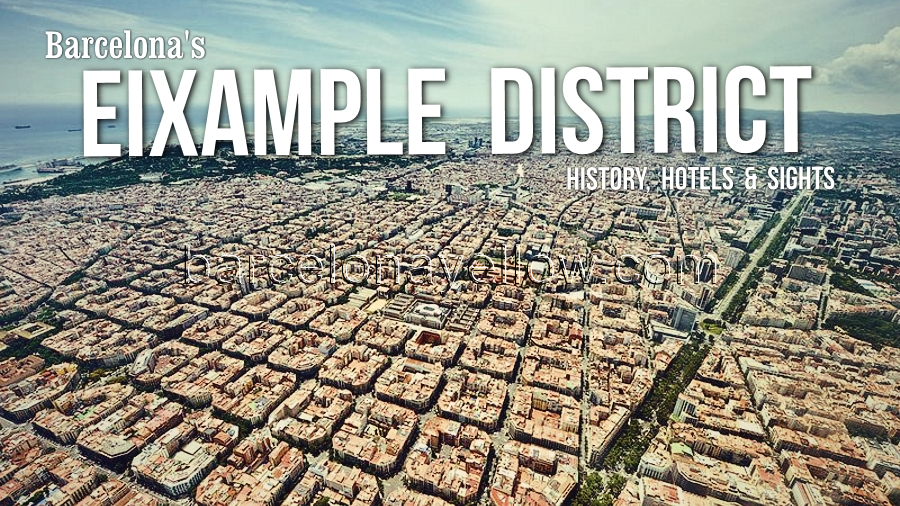
Eixample area of Barcelona
Updated July 2023
Eixample is one of the most popular areas for tourists to stay in Barcelona. Eixample, which is district 2 of Barcelona, is the most central district of the modern day city Barcelona. It consists of two main areas called Eixample left and Eixample right. Within the Eixample left and right are several 'barrio' neighbourhoods.
Photos Eixample area Barcelona
Photos Sagrada Familia
Photos Casa Batllo
What does the name Eixample mean? Many visitors confuse it with the English word 'example.' The word Eixample means 'extension' in the Catalan language. In Spanish the district is called Ensanche, but few people call it that nowadays. The Spanish verb "ensanchar" means to broaden or widen.
Eixample became the name for the 19th century modernist part of Barcelona after the city was extended with a new urban area outside Barcelona's medieval city area. This new expansion of Barcelona was necessary to accommodate the many changes that the industrial revolution had brought to Barcelona.
From the mid 19th century there was fast growing and increasingly wealthy middle class of Barcelona and they demanded new, modern and grand residences with more space and better living conditions.
A development land plan was also badly needed to extend the city beyond the old medievals walls of Barcelona towards the village of Gràcia, Sants, Poblenou, Sant Andreu among others because by then Barcelona had 150,000 inhabitants living inside the old city walls and was one of the most densely populated cities in Europe with more than 900 habitants per hectare.
This plan to extend Barcelona with the area of Eixample was one of the earliest attempts at urban planning in the world. In 1855 the Barcelona adjuntament city council authorized the demolition of the Barcelona's medieval city walls and in 1859 there was a competition for projects for a major expansion of the city.
Spanish / Catalan engineer Ildefons Cerdà (1815-1876) won the competition with his Plan Cerdá in 1859 with a grid design of blocks and straight lines. It is interesting that Gaudi and Cerdà became two of the most famous Catalans in Barcelona's history considering that Gaudi rejected straight lines while Cerda embraced them.
Cerda's love of straight lines shows in his design of a 1300 hectar grid pattern of blocks of residential buildings which have chamfered corners - blocks are called illes in Catalan and manzanas in Spanish.
The Eixample blocks in the Plan Cerdá measure 113 x 113 m and covered 14% of the total municipal area. The Eixample was also characterised by many long straight streets and wide avenues.
The Ajuntament (council) of Barcelona didn't initially choose the Cerda plan because it more or less left the medieval city centre the way it was. So their first choice for an extension plan was by another Catalan called Antoni Rovira i Trias.
The Antoni Rovira i Trias plan for the expansion of Barcelona featured long straight avenues leading out from Plaça Catalunya in a radial fan-like shape. For reasons still unknown the decision from Madrid, after the winner had been picked, that the extension plan that would be made, would be that of lldefons Cerdà.
Few people are familiar with the Antoni Rovira i Trias initial winning bid now, but you can find a sculpture of him sitting on a bench in the Gracia area of Barcelona and on the ground in front of him you can see his ideas.
Before the Eixample was devised the modern areas of Sants, Sarrià, Gràcia and Sant Andreu were still independent villages which were separate from Barcelona. The street Passeig de Gracia got its name because this was the lane from the walled city of Barcelona to the village of Gracia.
Today Passeig de Gracia is Barcelona's most exclusive boulevard and the most expensive street in Spain. The Passeig de Gracias has designer shops, luxury hotels and magnificent Modernist building making it a popular street with tourists to stay on in Barcelona. Find the best hotels on Passeig de Gracia.
To ensure maximum quality of life and avoid the overcrowding and congestion of the crampled living conditions of the old city of Barcelona, the cerda plan for the Eixample area of Barcelona had strict building controls to ensure sunshine, light and gardens in each block.
Only in a very few blocks in the modern day Eixample follow his original idea, but some gardens do exist and some blocks do have large courtyard patios in the middle to provide natural light.
A feature of Cerdà's plan that thankfully has survived are the 45º diagonally cut corners of each block called 'chaflanes'. This idea was to bring light and space between the blocks, but mostly to give the steam trams room to make their long turns. Today these cut corners are used for parking.
The Eixample consists of a 'left and right' area called Eixample Esquerre, which is the area left of the Passeig de Gracia - and Eixample Dret, the right side of Passeig de Gràcia. The right side is generally considered to be most exclusive and where we find the two famous Gaudi buildings La Pedrera (Casa Mila) and Casa Battlo.
In the days before the elevator was invented the lower level apartments were the most prestigious, largest and most luxurious. This is where the owners of the building resided and it was called the Principal floor - the first above the ground floor.
Many of these high ceiled luxury flats for the building owners featured extended viewing galleries with high glass windows.
Many modernist apartments also had fabulous tiled floors.
An example of a luxury first floor modernist apartment can be seen at the Casa Battlo apartment block designed by Gaudi. The top floors of early Modernist buildings were the hardest to reach by stair, at a time when elevators were uncommon, so the top floors were typically housed the servants quarters, while the best apartment was considered to be the first floor often called the 'noble' floor.
The Eixample area of Barcelona became the cradle of Catalan modernism. This is where great Catalan architects competed to help the "americanos" or "indios," the wealthy Catalan, who had returned from lost Spanish colonies, spend some of their wealth on fabulous modernist homes like Casa Amatller, Casa Mila and La Pedrera to name a very few.
From the modernist era also came communal buildings like the Sagrada Famila church and the Sant Pau hospital and many more.
On the Passeig de Gràcia visitors can find the residential block that got the nickname 'Mançana de la Discòrdia' which means 'the block of disagreement' This is due to three houses in a single block that were all designed by the most prominent Modernist architects but in very three different styles.
The three famous Modernist houses are Casa Amatller by Josep Puig i Cadafalch , Casa Morera by Domènech i Montaner and Casa Batlló by Gaudí. The popular Rambla de Catalunya which runs parallel to Passeig de Gracia was built over a former river called 'la Riera d'en Malla' which was covered over.
It used to run all the way to the sea where the La Rambla also is located in the Cuitat Vella
Eixample tourist attractions
La Sagrada Familia unfinished church by Antóni Gaudi
Hospital Sant Pau by Domènech i Montaner
Casa Mila La Pedrera by Antóni Gaudi
Casa Battlo building by Antóni Gaudi
Casa Amatller by Josep Puig i Cadafalch
Casa Morera by Lluís Domènech i Montaner
Fundacio Antoni Tapies - art museum
Hotels Eixample area Barcelona
Photos Eixample area Barcelona
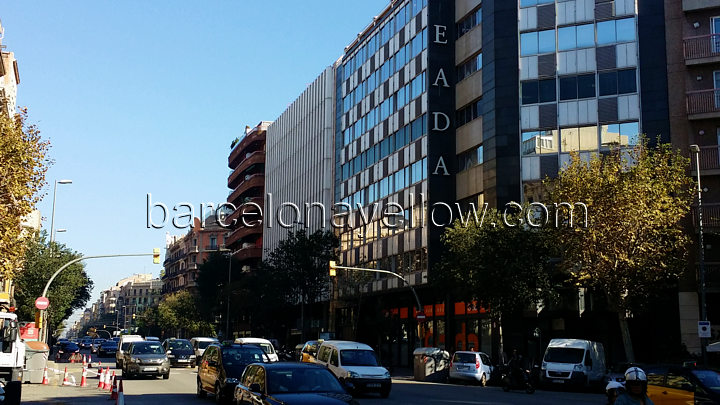

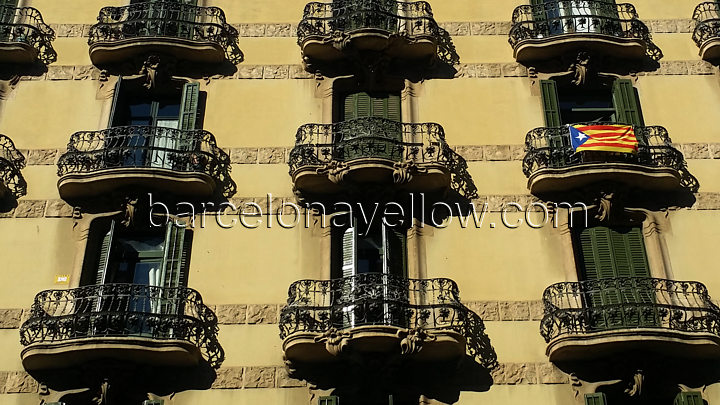


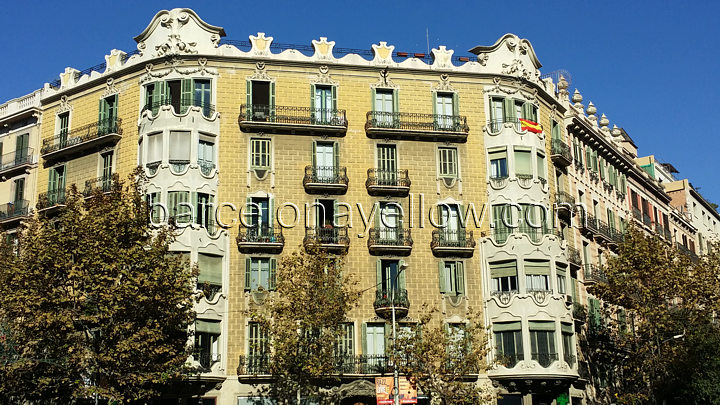
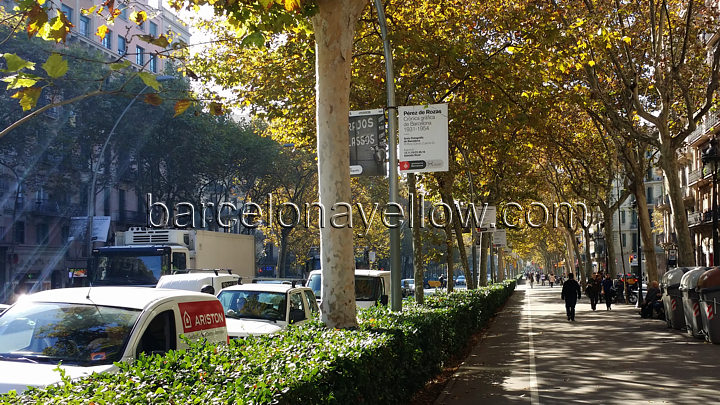
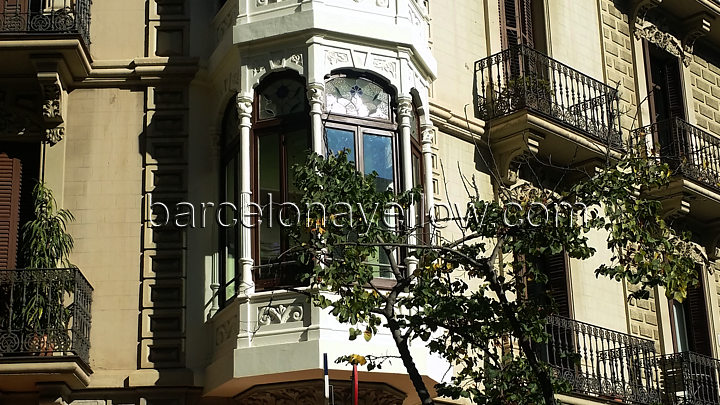
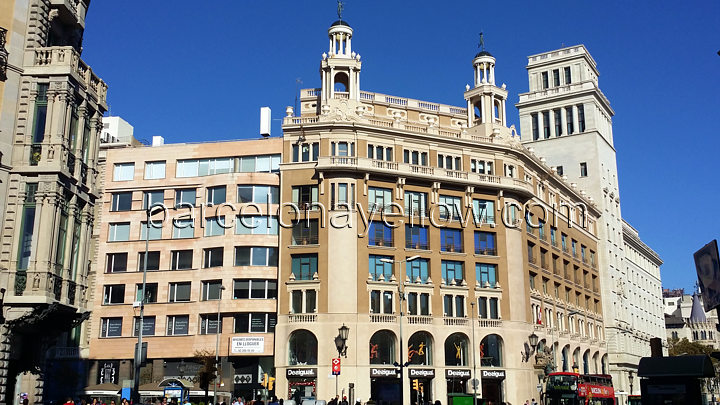
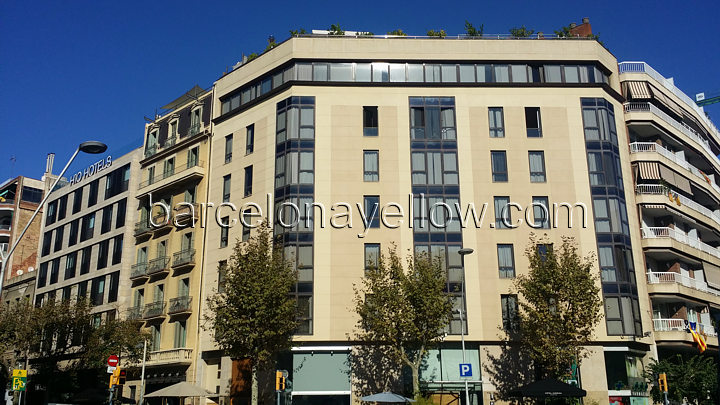
Reasons to stay in Eixample area of Barcelona
More elegant than the old parts of Barcelona
many beautiful modernist buildings
Clean and organized
Great shopping, excellent public transport few tourists, very central
Spacious flats
Good solid buildings quality workmanship
Good shopping and dining good nightlife
Civilized and very safe
Great roof terraces
Many hotels with great food and bars
© Copyright Barcelonayellow.com
All rights reserved.
Do not copy anything on this page without permission |
|
Last Updated on Saturday, 15 July 2023 13:50 |












